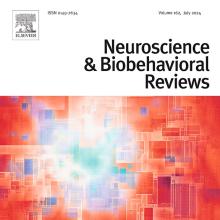
Un article de l'équipe Forgetting dans Neuroscience & Biobehavioral Reviews sur les causes de l'oubli en mémoire de travail.
Malleret G, Salin P, Mazza S, Plancher G. Working memory forgetting: Bridging gaps between human and animal studies. Neurosci Biobehav Rev. 2024 Aug;163:105742. doi: 10.1016/j.neubiorev.2024.105742. Epub 2024 Jun 1. PMID: 38830561.
Abstract
The causes of forgetting in working memory (WM) remain a source of debate in cognitive psychology, partly because it has always been challenging to probe the complex neural mechanisms that govern rapid cognitive processes in humans. In this review, we argue that neural, and more precisely animal models, provide valuable tools for exploring the precise mechanisms of WM forgetting. First, we discuss theoretical perspectives concerning WM forgetting in humans. Then, we present neuronal correlates of WM in animals, starting from the initial evidence of delay activity observed in the prefrontal cortex to the later synaptic theory of WM. In the third part, specific theories of WM are discussed, including the notion that silent versus non-silent activity is more consistent with the processes of refreshing and decay proposed in human cognitive models. The review concludes with an exploration of the relationship between long-term memory and WM, revealing connections between these two forms of memory through the long-term synaptic hypothesis, which suggests that long-term storage of interference can potentially disrupt WM.











